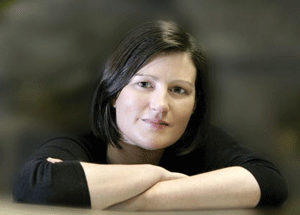Slaking a thirst for knowledge

Pam Millist looks at how an iconic brand is using knowledge management to support its core business.
At the recent VALA - Libraries, Technology and the Future conference held in Melbourne, one paper that sparked wide interest among delegates was the keynote plenary presentation by Guinness Archivist, Eibhlin Roche. In her presentation, Eibhlin discussed how the collections and assets of the Guinness Archive, Library and Museum are now invaluable assets contributing to and adding value to the organisation. Enhanced use of their collections together with digitisation and clever use of technology has significantly built patron support/buy-in as well as adding value to the brand and boosting revenue.
The Guinness Archive, located in the Guinness Storehouse in Dublin, exists primarily to promote the Guinness brand. It holds 7.5 thousand linear metres of paper records, several thousand items of advertising, including more than 20,000 employee records dating back to the 1880s.
 “These records provide an invaluable social record and they are actually very unique in Ireland as an awful lot of our social records were destroyed during 1922 during the Irish Civil War,” said Roche.
“These records provide an invaluable social record and they are actually very unique in Ireland as an awful lot of our social records were destroyed during 1922 during the Irish Civil War,” said Roche.
“This elevates the Guinness Records to national importance because the brewery was the largest employer in Dublin for well over 100 years and the records that we have are so rich and detailed.”
There are also thousands of artefacts as well as multimedia materials. With a team of only two archivists and working proactively with other teams within Guinness, the Archive team have a program to create and organise digital content that has contributed significantly to promoting the Guinness brand.
This work has been driven by the business environment in which it operates and its mission which is to support the brand experience of Guinness. Using their knowledge of the collection and focusing on the parts of the collection of most interest, the team have worked on a range of projects to make the key assets of the Guinness Archive and museum available globally.
A key focus has been on the Archive’s most used and highly visible collection – its advertising collection in various media: posters, press ads, cinema advertising and digital advertising.
The first press ad for Guinness appeared in 1929.
“Cataloguing and digitisation are at the heart of the service offered by the Guinness Archive,” said Roche.
The advertising material in the Guinness Archive has been indexed and digitised and is now fully searchable by campaign, type, date, artist, copyright owner, and market.
Working with the global business marketing team to exploit the archives to grow the brand and reputation of Guinness has led to the development of their Smart Library. This online tool was developed by Guinness parent company Diageo. It allows Guinness marketing teams and agencies around the world to browse the full creative archives, and view metadata about copyright and usage.
Based on the digitisation of key iconic marketing items within the Archives together with current advertising collateral, the Smart Library allows partners all over world to access the parent company’s brand assets according to their permission rights to the material. New advertising material is added and is immediately available to other markets with copyright owner and usage rights clearly articulated.
Every new piece of Guinness merchandise based on historic artwork uncovered from the archives adds to an annual revenue stream for the company that is already over 80 million pounds sterling.
As well as the measurable financial benefits, other benefits of the Smart Library identified by the marketing team include:
- asset management organised by metadata taxonomy, brands, functions, and geographies;
- preservation of intellectual property and usage rights management;
- brand consistency and quality;
- process efficiency; and
- sharing of best practice.
Guinness is deriving enormous commercial and marketing value from the digitisation and controlled availability of its assets and its unique Irish records. The key “lessons learnt” outlined by Roche are: to have a clearly defined mission statement for your information or knowledge service with a unique selling point that ties it to your organisation, be strategic in prioritising projects, apply key metrics for success and seek collaboration.
The work of Eibhlin Roche and Guinness Archives is an excellent demonstration of the way Knowledge Management is evolving to encompass traditional and new technologies to create E2.0 (Enterprise 2.0).
With a strategic perspective on management of digital assets and working to focus on adding value to an organisation, what might have been seen as a dusty museum and records collection is now a valuable and key asset to Guinness and the parent organisation.
Pam Millist is a Consultant with information management software and consulting firm Maxus Australia. Maxus offers collaboration, productivity, innovation and knowledge sharing solutions to organisations across Australia, in South East Asia, the South Pacific and elsewhere . Contact her at Pam.Millist@maxus.net.au
